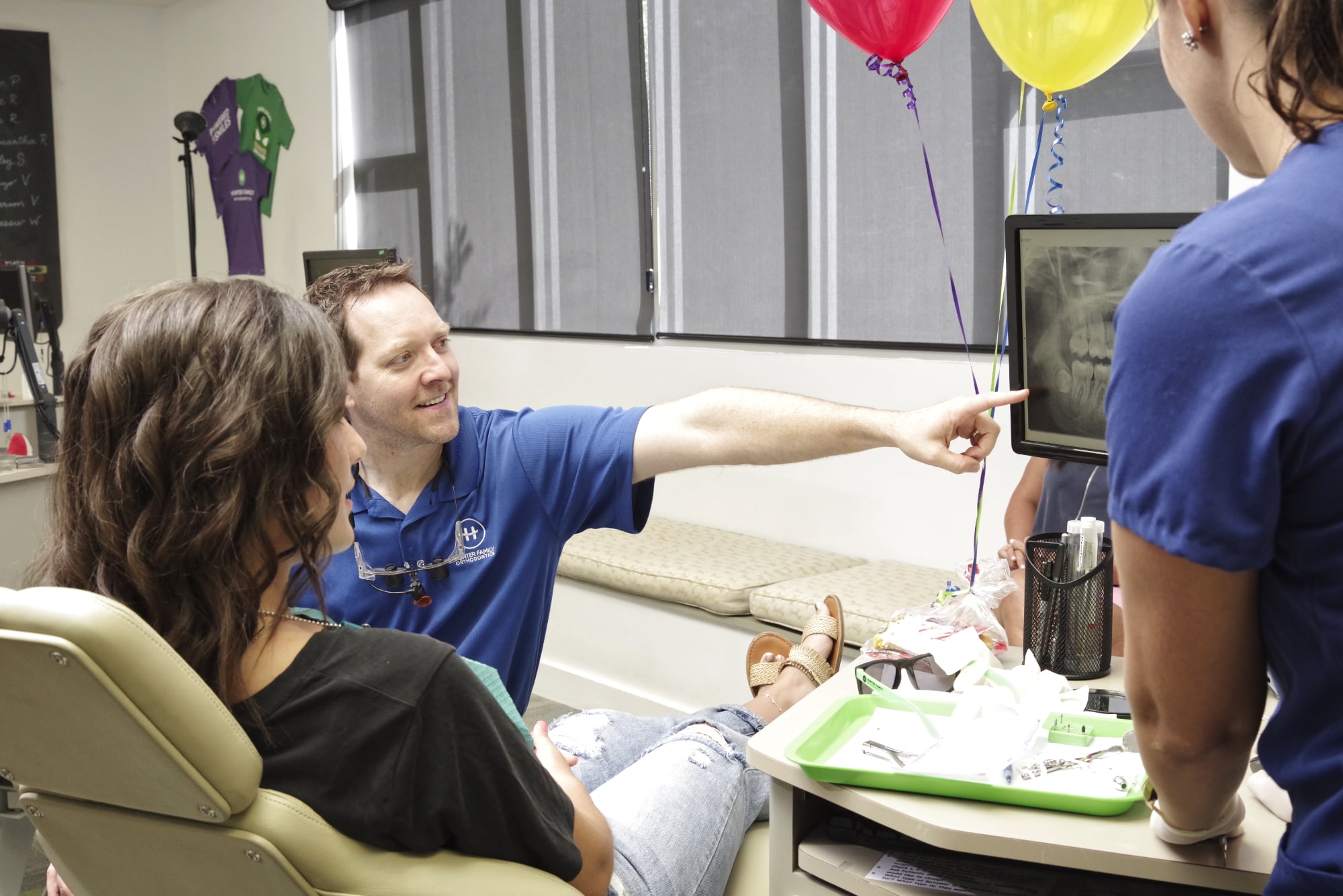Many people receive regular dentist visits every six months, where they receive a check up and teeth cleaning. These visits are an important part of maintaining good oral health. However, they are certain teeth issues that a dentist is not trained to deal with, such as teeth and jaw alignment, and you may need to visit an orthodontist, a specialist who can help fix these issues. To better understand the benefits of visiting an orthodontist versus a general dentist, let’s look at the similarities and differences between the two.
Orthodontists and dentists both have educational backgrounds that are alike, with both earning either a D.D.S. (Doctor of Dental Surgery) or a D.M.D. (Doctor of Dental Medicine). Orthodontists then move on to a two or three-year residency at a university-affiliated program approved by the American Dental Association. This further training means that sometimes you will want to visit an orthodontist rather than a dentist, as there are certain advantages that will be helpful to you depending on your needs. Dentistry is a broad, general medical field, trained to diagnose and treat more generalized oral health issues.
You may need to go to a dentist for a variety of reasons. Services a dentist can provide typically include:
- Dental Check-ups (Including X-rays)
- Teeth Cleanings
- Filling Cavities
- Create Denture Models
- Gum Care (Preventing gingivitis or gum disease)
- Root Canals
However, if your dental needs fall outside of these services, you may need to go to an orthodontist. As these services show, general dentistry tries to prevent common dental problems such as cavities, gum disease, and other oral health issues. However, these problems can become difficult to treat because of things like the overcrowding of teeth. Dentists are not experts in diagnosing and treating problems related to problems involving tooth and jaw alignment.
Orthodontists have received specialized higher education, allowing them to provide certain services that dentists cannot, specializing in realigning teeth if your teeth and jaws. In these cases, dentistry alone cannot fix these issues, and you need to see an orthodontist to be fitted with braces or some other corrective device. Correct spacing can allow patients to floss and brush their teeth more effectively, a vital part of good oral hygiene. You also may need an orthodontist if you have an overbite or underbite. Bad bites are also known as malocclusions. To treat these issues, orthodontists will use braces, or possibly other corrective devices. Let’s look at each individual orthodontic problem and how the specialized treatment orthodontists can provide can fix these issues in a way general dentistry cannot.
- Underbite
Underbites are when the upper teeth fit behind the lower teeth, which can result in excessive wear and tear on your teeth. This problem can be fixed with braces or dental facemasks, which bring the upper teeth forward so they fit comfortably over the lower teeth.
- Overbite
Overbites can results in a variety of problems. An overbite is when the front teeth jut out over the lower teeth. A deep overbite is the result of when the upper front teeth cover the lower front teeth excessively.
- Openbite
An openbite is when no overlapping occurs when the front teeth are closed. Openbites can occur in children if they use their tongues to push their teeth open. Using what’s called a “crib” can help prevent the tongue from pushing the teeth outward, and helps with retraining the tongue.
- Additional Issues+
Dentists can provide bridges for congenitally missing teeth, but sometimes the teeth need to be moved into the correct position before the bridge can be put in place. Orthodontists can provide braces that will move the teeth and space them properly for the bridge to be put in place. Other services an orthodontist can provide include lip bumper treatment, which can correct teeth spacing to allow the teeth to grow in. Things like jaw pain can also be an issue that an orthodontist can fix, as their additional training teaches them how to move the jaw into the correct alignment. In more extreme cases, surgery can be utilized, an option that dentists cannot provide.
Here are the services orthodontists provide to correct these issues:
- Braces
- Retainers
- Invisalign®
Invisalign® is a clear retainer that fits around and straightens your teeth, similar to braces. Some dentists can provide you with Invisalign® products after receiving product training. However, that does not mean they have had the in-depth training and experience to weigh the pros and cons of Invisalign® against other treatment options. Patients should be best informed of the options available to them when making treatment options. An orthodontist has extensive training regarding teeth and jaw alignment options.
If you would like to learn more about what services an orthodontist can provide, please visit our website at www.HunterFamilyOrtho.com or contact us here.

